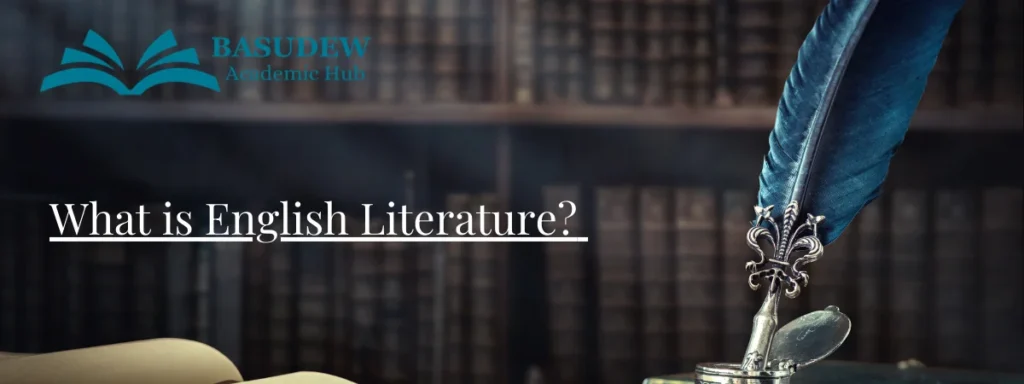Australian literature reflects the diverse cultural landscape, rich history, and unique identity of the continent. From the Indigenous oral traditions to contemporary novels, poetry, and plays, Australian literature encompasses a wide range of voices and perspectives. This note will explore the evolution, themes, and notable authors of Australian literature in accessible language.
Early Influences: Indigenous Oral Traditions
Australian literature traces its roots back to the rich oral traditions of the Indigenous peoples who have inhabited the continent for thousands of years. These oral traditions include myths, legends, songs, and storytelling that have been passed down through generations. They often reflect the deep connection to the land, spiritual beliefs, and cultural practices of Australia’s First Nations peoples.
Colonial Period: Exploration and Settlement
The colonial period marked the beginning of written literature in Australia, largely shaped by the experiences of European explorers, settlers, and convicts. Early colonial writings, such as journals, diaries, and letters, provide insights into the harsh conditions, encounters with Indigenous peoples, and struggles of survival in a new and unfamiliar land.
Bush Ballads and Folklore
During the 19th century, Australian literature began to flourish with the emergence of bush ballads and folklore. Poets like Banjo Paterson and Henry Lawson captured the spirit of the Australian bush and the lives of settlers, swagmen, and drovers through their evocative verse. Their works celebrated the rugged beauty, resilience, and humor of the Australian outback, shaping the national identity and cultural imagination.
The Rise of the Australian Novel
The late 19th and early 20th centuries witnessed the rise of the Australian novel, with writers like Marcus Clarke, Henry Handel Richardson, and Miles Franklin making significant contributions to the literary landscape. Clarke’s “For the Term of His Natural Life” (1874) explored the convict experience in Tasmania, while Richardson’s “The Fortunes of Richard Mahony” (1917) depicted the struggles of a European immigrant family in Australia.
Modernism and Beyond
In the 20th century, Australian literature underwent a period of modernist experimentation and innovation. Writers like Patrick White, Christina Stead, and David Malouf challenged conventional literary forms and explored complex themes of identity, alienation, and cultural conflict. White’s “Voss” (1957) and Stead’s “The Man Who Loved Children” (1940) are among the standout works of this era.
Indigenous Voices: A Resurgence
The latter half of the 20th century saw a resurgence of Indigenous voices in Australian literature, reclaiming and celebrating Indigenous culture, history, and identity. Writers like Oodgeroo Noonuccal, Sally Morgan, and Kim Scott brought Indigenous perspectives to the forefront, challenging colonial narratives and advocating for Indigenous rights and recognition.
Contemporary Landscape: Diversity and Globalization
Contemporary Australian literature reflects the diversity and multiculturalism of modern-day Australia. Writers from diverse backgrounds, including immigrants, refugees, and descendants of settlers, contribute to the vibrant literary scene with their stories of migration, diaspora, and cultural hybridity. Authors like Peter Carey, Kate Grenville, and Tim Winton continue to explore Australian themes and experiences in a global context.
Themes in Australian Literature
Australian literature explores a wide range of themes that reflect the complexities of Australian society and culture. These themes include:
- Identity and Belonging: Writers often explore questions of identity, belonging, and cultural heritage, particularly in the context of Australia’s colonial history and multicultural society.
- Land and Environment: The Australian landscape, with its vast deserts, rugged coastlines, and unique wildlife, serves as a central motif in Australian literature, symbolizing both beauty and harshness.
- Colonialism and Indigenous Rights: Australian literature grapples with the legacy of colonialism, including the dispossession and marginalization of Indigenous peoples, and advocates for Indigenous rights, reconciliation, and justice.
- Migration and Diaspora: The experiences of migrants, refugees, and their descendants are explored in Australian literature, highlighting the complexities of cultural identity, displacement, and adaptation.
- Social Justice and Inequality: Writers often address social issues such as racism, sexism, poverty, and inequality, advocating for social justice, equity, and human rights.
Notable Authors in Australian Literature
Australian literature boasts a rich array of talented authors who have made significant contributions to the literary world. Some notable authors include:
- Banjo Paterson: Known for his iconic bush ballads, including “Waltzing Matilda” and “The Man from Snowy River.”
- Henry Lawson: A master of the short story and bush poetry, Lawson’s works capture the hardships and resilience of life in the Australian bush.
- Miles Franklin: Best known for her novel “My Brilliant Career,” Franklin was a pioneering feminist writer who explored themes of gender, identity, and independence.
- Patrick White: Australia’s first Nobel Prize laureate in Literature, White’s novels, including “Voss” and “The Tree of Man,” are celebrated for their depth, complexity, and insight into the human condition.
- David Malouf: Renowned for his lyrical prose and vivid imagery, Malouf’s novels, such as “Remembering Babylon” and “The Great World,” explore themes of memory, identity, and belonging.
- Tim Winton: A prolific and award-winning author, Winton’s novels, including “Cloudstreet” and “Breath,” capture the essence of Australian life, landscape, and culture.
- Kate Grenville: Known for her historical fiction, Grenville’s novels, including “The Secret River” and “The Lieutenant,” explore Australia’s colonial past and its impact on Indigenous peoples.
- Kim Scott: A prominent Indigenous writer, Scott’s novels, such as “That Deadman Dance” and “Taboo,” challenge colonial narratives and celebrate Indigenous culture and resilience.
Conclusion
Australian literature is a vibrant tapestry of voices, stories, and perspectives that reflect the unique character and diversity of the continent. From Indigenous oral traditions to contemporary novels, Australian literature continues to evolve and inspire, capturing the imagination of readers both locally and globally. Through its exploration of identity, history, and social issues, Australian literature invites readers on a journey through the landscapes of the Australian imagination, enriching our understanding of ourselves and the world around us.
The Major Time Periods of Australian Literature
| Time Period | Characteristics | Notable Authors |
| Early Colonial (Late 18th – Early 19th Century) | Exploration of the Australian landscape, encounters with Indigenous peoples, and accounts of convict life. | Watkin Tench, Dorothea Mackellar |
| Bush Ballad Era (Mid 19th – Early 20th Century) | Emergence of bush poetry and folklore depicting life in the Australian outback. | Banjo Paterson, Henry Lawson, Mary Gilmore |
| Colonial Literature (Late 19th – Early 20th Century) | Novels and short stories reflecting the experiences of European settlers and convicts. | Marcus Clarke, Henry Handel Richardson, Miles Franklin |
| Modernism (Early to Mid 20th Century) | Experimentation with literary forms, exploration of identity and social issues. | Patrick White, Christina Stead, David Malouf |
| Indigenous Resurgence (Mid to Late 20th Century) | Reclamation of Indigenous voices, advocacy for Indigenous rights and recognition. | Oodgeroo Noonuccal, Sally Morgan, Kim Scott |
| Contemporary Diversity (Late 20th Century – Present) | Diverse voices reflecting multiculturalism, migration, and global perspectives. | Peter Carey, Kate Grenville, Tim Winton, Alexis Wright |
Australian Literature Today
Australian literature today is a colorful blends woven from the diverse threads of culture, history, and imagination. From the vast deserts of the Outback to the bustling streets of Melbourne and Sydney, Australian writers transport readers to a land of beauty, complexity, and intrigue.
Diverse Voices
One of the most striking features of Australian literature today is its diversity of voices. Indigenous writers like Alexis Wright and Tara June Winch share powerful stories that celebrate Indigenous culture, history, and resilience. Immigrant writers like Maxine Beneba Clarke and Nam Le bring fresh perspectives and experiences to the literary landscape, enriching Australian storytelling with their unique voices.
Themes and Issues
Contemporary Australian literature grapples with a wide range of themes and issues, reflecting the complexities of modern Australian society. From questions of identity and belonging to concerns about environmental sustainability and social justice, Australian writers tackle pressing issues with sensitivity, insight, and empathy.
Exploring the Land
The Australian landscape, with its breathtaking beauty and harsh realities, serves as a background for many contemporary Australian novels and poems. Writers like Tim Winton and Richard Flanagan capture the essence of the land, from the sun-scorched plains of the Outback to the wild shores of Tasmania, inviting readers to embark on a journey of discovery and wonder.
Global Recognition
Australian literature has gained international recognition in recent years, with writers like Hannah Kent and Markus Zusak winning acclaim and accolades around the world. Their novels, set against the backdrop of Australian history and culture, resonate with readers of all backgrounds, transcending geographical boundaries and cultural divides.
A Vibrant Literary Scene
Australia boasts a vibrant literary scene, with bookstores, literary festivals, and writing workshops thriving in cities and towns across the country. Writers come together to share ideas, collaborate on projects, and celebrate the power of storytelling, fostering a sense of community and camaraderie within the Australian literary world.
Conclusion
Australian literature today is a testament to the richness and diversity of Australian culture and society. With its diverse voices, thought-provoking themes, and captivating storytelling, Australian literature continues to captivate and inspire readers both at home and abroad. As we immerse ourselves in the pages of contemporary Australian novels and poems, we gain new insights, empathy, and understanding, deepening our connection to the land and its people.
Celebrating Women Writers in Australian Literature
Women writers have made significant contributions to Australian literature, enriching the literary landscape with their diverse voices, perspectives, and stories. From the pioneering efforts of early colonial writers to the vibrant creativity of contemporary authors, women writers have played a vital role in shaping the Australian literary canon.
Early Pioneers
In the early colonial period, women writers faced numerous challenges in asserting their voices in a male-dominated society. Despite these obstacles, women like Mary Hannay Foott and Louisa Atkinson made significant contributions to Australian literature, writing poetry and prose that captured the beauty and challenges of life in the Australian bush.
The Bush Ballad Era
During the bush ballad era of the late 19th and early 20th centuries, women writers like Ada Cambridge and Mary Gilmore emerged as prominent voices in Australian literature. Their poetry and prose celebrated the rugged beauty of the Australian landscape and explored themes of love, loss, and resilience.
Modernism and Beyond
In the 20th century, women writers began to challenge traditional literary forms and explore new themes and perspectives. Writers like Christina Stead and Kylie Tennant brought a fresh energy and vitality to Australian literature, pushing the boundaries of storytelling and capturing the spirit of a changing society.
Feminist Voices
The feminist movement of the 1960s and 70s gave rise to a new generation of women writers who used their work to explore issues of gender, identity, and social justice. Writers like Germaine Greer, Helen Garner, and Kate Grenville tackled taboo subjects and challenged societal norms, paving the way for future generations of women writers.
Contemporary Voices
Today, women writers continue to play a central role in Australian literature, exploring a wide range of themes and genres. Writers like Helen Garner, Hannah Kent, and Kate Atkinson have won acclaim for their insightful portrayals of Australian life, while emerging voices like Alice Pung and Tara June Winch offer fresh perspectives and diverse storytelling styles.
Conclusion
The contribution of women writers to Australian literature is immeasurable, enriching the literary landscape with their creativity, insight, and imagination. From the early pioneers of the colonial period to the contemporary voices of today, women writers have played a vital role in shaping the Australian literary canon and capturing the spirit of a nation. As we celebrate their achievements, let us continue to champion and support women writers in their ongoing quest to share their stories with the world.
Who was Joseph Furphy?
Joseph Furphy (1843-1912), often known by his pen name “Tom Collins,” is considered one of the founding figures of Australian literature. Furphy is best known for his seminal work “Such Is Life,” a novel that offers a vivid portrayal of life in the Australian outback during the late 19th century. This work, first published in 1903, is regarded as a cornerstone of Australian literary tradition.
Born in Yering, Victoria, Furphy grew up in a rural environment, which significantly influenced his writing. He had various occupations throughout his life, including bullock driver, farmer, and later, an ironmonger. These diverse experiences provided him with a rich tapestry of material for his literary endeavors, allowing him to authentically depict the nuances of bush life and the Australian landscape.
“Such Is Life” is celebrated for its innovative narrative structure and distinctive Australian vernacular. The novel is a rambling, episodic account of the life of Tom Collins, a philosophical and loquacious narrator who reflects on his experiences as a bullock driver in the Riverina district of New South Wales. The book’s digressive style and vivid characterizations present a multifaceted view of Australian society, touching on themes of mateship, identity, and the harsh realities of rural existence.
Furphy’s use of humor, irony, and a distinctly Australian voice set his work apart and laid the groundwork for future Australian literature. Despite the initial limited commercial success, “Such Is Life” gained recognition posthumously and is now regarded as a classic, embodying the spirit and challenges of early Australian life.
Beyond his literary achievements, Furphy’s life exemplified the resilience and resourcefulness that characterized many early Australian settlers. His ability to capture the essence of the Australian experience in a manner that is both insightful and entertaining has secured his place as a pivotal figure in the development of national literature.





